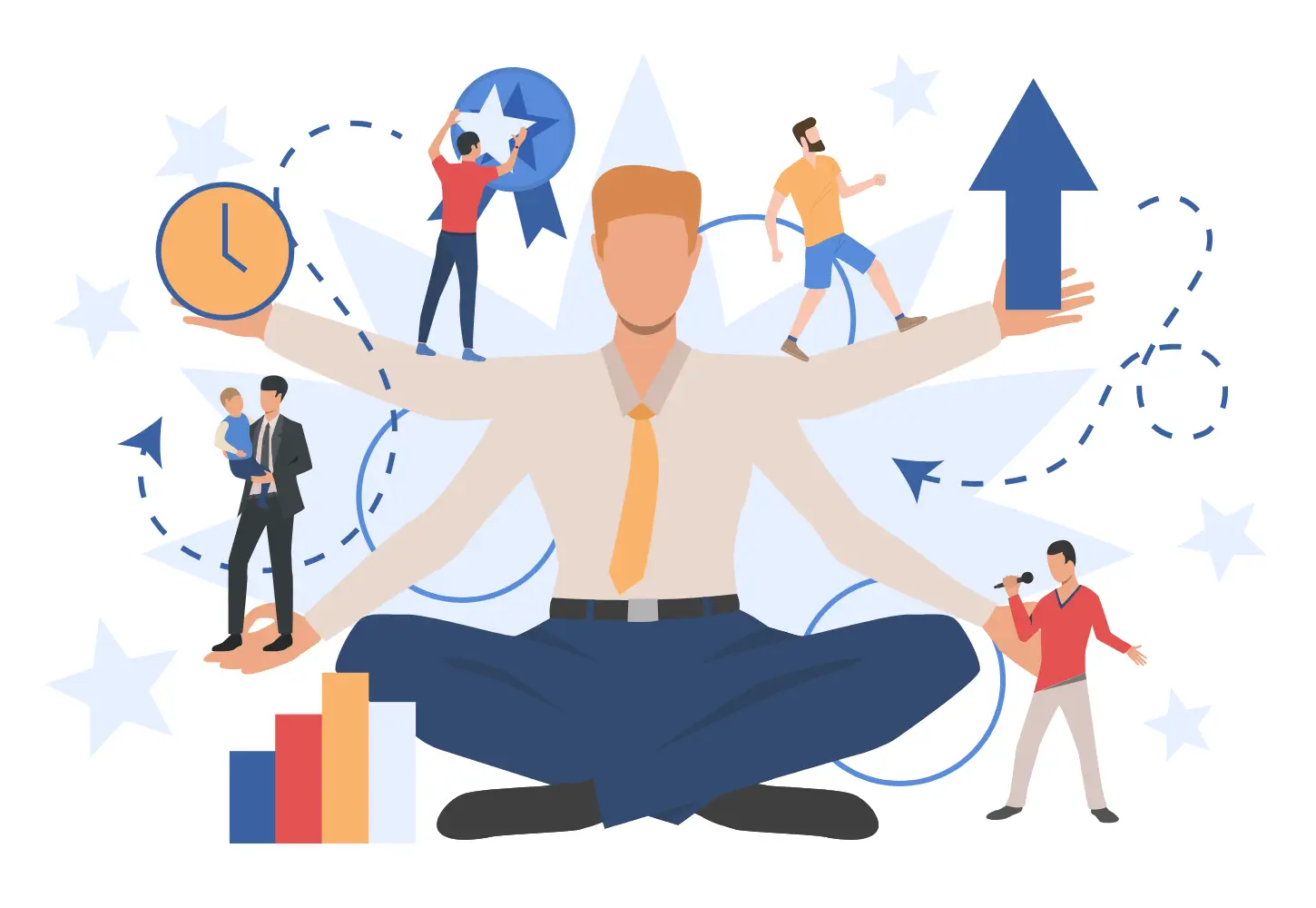In the high-pressure environment of modern leadership, stress, rapid decision-making, and constant change dominate our landscape. Yet, tucked amid the daily grind are small, easily overlooked moments—the gentle cues of human connection or wellbeing that have the power to radically improve both leadership effectiveness and organisational health. These are known as glimmer moments.
Introduction: Leadership Beyond the Bottom Line
As senior business leaders, we are inundated with priorities: growth targets, transformation initiatives, risk management, and regulatory compliance. Amidst this, employee wellbeing and sustainable leadership often feature as aspirational rather than practical objectives. Yet, the companies that thrive are no longer those that focus exclusively on performance metrics—the emerging literature on workplace psychology confirms that an organisation’s ability to flourish increasingly rests on the minutiae of daily lived experiences, both individual and collective.
One concept rising to prominence in academic and professional circles to help create these flourishing environments is that of the “glimmer moment”—brief, often subconscious, positive experiences that ground us in feelings of safety, connection, or simple joy. While seemingly minor, these glimmers can be a lever for resilience, innovation, and competitive advantage when harnessed.
This article will explore:
- What glimmer moments are, and their scientific basis
- How glimmer moments impact leadership, culture, and performance
- Practical, evidence-informed steps for senior leaders to foster glimmer moments, shaping a more engaged and resilient workforce and a more robust business.
Understanding Glimmer Moments: Beyond ‘Wellbeing Initiatives’
1. Defining Glimmer Moments
Trauma therapist Deb Dana introduced the term “glimmer” in her exploration of Polyvagal Theory (Dana, 2021). Glimmers are the opposite of triggers—small, fleeting cues signalling safety and social connection. A glimmer can be as simple as seeing a trusted colleague’s genuine smile, a shared moment of humour in a difficult meeting, or witnessing meaningful collaboration.
Unlike the grand gestures often associated with well-being (think team away days, expensive workshops, or sweeping wellness programmes), glimmer moments are grounded in everyday experience and require no significant resource outlay to cultivate.
Key Characteristics of Glimmer Moments:
- Brief and subtle; often missed or dismissed
- Elicit a positive physiological response (a sense of calm, connectedness, or uplift)
- Can be internal (personal satisfaction, clarity) or relational (connection with others)
- Found in the ordinary: a pleasant morning greeting, shared laughter, moments of gratitude, small achievements
2. Scientific Foundations: Why Glimmers Matter for Leaders
The academic foundation for glimmer moments is robust, drawing upon several strands of psychological research:
Polyvagal Theory and Safety Cues
Polyvagal Theory (Porges, 1995; Dana, 2021) posits that the human nervous system constantly scans for signs of safety or threat (termed neuroception). When it encounters a ‘glimmer’, the body and brain momentarily relax out of survival mode into a state that supports openness, engagement, and learning. This process is fundamental for leaders and teams seeking to shift from reactivity to responsiveness.
Broaden-and-Build Theory
Professor Barbara Fredrickson’s Broaden-and-Build Theory (Fredrickson, 2001; 2004) describes how positive emotions—often originating from fleeting moments—broaden individuals’ awareness and encourage creative, resourceful thought. Her longitudinal studies show that regular positive micro-moments enable people to build psychological, social, and cognitive resources over time, establishing a foundation for resilience, adaptability, and innovation.
Emotional Contagion in the Workplace
Barsade and O’Neill (2014) found that micro-moments of companionate love (expressions of warmth, affection, and connection) predict team performance, job satisfaction, and lower absenteeism. Through their behaviour, leaders create emotional climates: their sensitivity to glimmers and skill in amplifying them has a measurable effect on whole organisations.
Neurobiological Evidence
Recent advances in neurobiology (Davidson & McEwen, 2012) have underscored the link between frequent, mild positive experiences and brain plasticity. They note that leaders and employees regularly exposed to glimmers demonstrate improved stress regulation, empathy, and executive function.
Why Glimmer Moments Are Essential for Senior Leadership
Leadership in the modern era is not solely, or even primarily, a cognitive exercise. Increasingly, it is a relational and emotional one. Glimmer moments offer a practical, scalable tool to bridge the gap between strategy and culture, impacting three critical domains:
1. Psychological Safety and Trust
Amy Edmondson’s landmark research (1999) established that psychological safety is the predictive factor in high-performing teams. When glimmer moments are noticed and shared, leaders model vulnerability and authenticity. This, in turn, helps dismantle the stigma around expressing positive emotions in ‘serious’ business contexts and paves the way for absolute transparency, risk-taking, and open feedback.
2. Performance and Creativity
Positive micro-moments cause the brain to broaden its working memory and associative thinking abilities (Isen, 1999). These abilities underpin innovative problem-solving, a vital asset for organisations facing volatility. They also boost intrinsic motivation, leading to improved discretionary effort across teams.
3. Resilience and Retention
Leaders and employees regularly exposed to glimmer moments report lower rates of burnout (Fredrickson et al., 2008), faster recovery from setbacks, and higher organisational commitment. In an era defined by talent shortages and rapid change, the ability to foster such an environment is a profound advantage.
Moving from Insight to Implementation: Actionable Strategies for Leaders
Awareness of glimmer moments is only the starting point. Driving internalisation and cultural shift requires intentional practices and systemic reinforcement.
1. Personal Leadership Practice: Cultivating Awareness
A. Notice Your Own Glimmers
Glimmer literacy starts with leaders themselves. Make a habit of noticing your own micro-moments of safety and connection throughout your workday:
- Did you feel genuine appreciation from a team member?
- Was there a brief moment of peace in your routine?
- Did something, however small, inspire a sense of joy or hope?
Documenting these in a private journal or in your phone’s ‘notes’ section is often enough. Neuroscience shows that the simple act of noting such experiences increases their frequency and impact (Rock, 2009).
B. Reflect Regularly
Schedule fortnightly blocks for private reflection, focusing specifically on positive moments—what patterns emerge? How do these moments affect your stress, focus, or mood?
2. Team-Level Action: Sharing and Role-Modelling
A. Embed Glimmer Moments into Meetings
Resist the urge to fill every agenda with only operational updates or strategic items. Begin critical meetings with an optional ‘glimmer round’: Invite (but never require) team members to share a positive micro-experience from the week.
B. Normalise Vulnerability
Openly narrate your own glimmer experiences to your team. For example, “I want to share a quick highlight from my day. I had a fantastic conversation with one of our new hires who shared a new perspective—reminded me why I love leading diverse teams.” These brief, authentic disclosures model openness and invite reciprocity.
C. Acknowledge and Amplify Others’ Glimmers
When you spot a team member experiencing a glimmer moment—a flash of pride in their work, successful collaboration, or a moment of levity—call it out respectfully. “I noticed how you and Jane solved that issue together—great teamwork.”
3. Organisational Culture: Systemic Enablers
A. Rethink Recognition
Move beyond annual awards or rigid ‘employee of the month’ schemes. Encourage peer-to-peer recognition platforms where staff can celebrate micro-moments—small wins, acts of support, displays of creativity—on a rolling basis. Tools like instant messaging apps and shared digital noticeboards work well for on-the-spot recognition.
B. Make Space for Informal Connection
Not all glimmers occur in formal settings. Physical and digital spaces that foster spontaneous, positive interaction can drive glimmer frequency. This may mean creating inviting communal areas or digital chat channels dedicated to non-work conversation and celebration.
C. Include Glimmer Inquiry in Engagement Surveys
Survey questions that probe employees’ experiences of safety, connectedness, and positive micro-moments (‘In the past month, have you felt a sense of joy or safety at work?’) provide actionable data for leaders to fine-tune their strategies.
D. Flexible Working and Micro-Breaks
Empower employees to take short, unstructured breaks to reset and notice glimmers—a short walk, a mindfulness pause, or time to connect socially. Data shows these tiny respites increase positivity and engagement over time (Sianoja, 2018).
E. Training Managers to Recognise and Nurture Glimmers
Offer workshops or briefings on the theory and practice of glimmer moments, including:
- How to spot them in themselves and others
- The neuroscience of micro-positivity
- Facilitation practices for micro-gratitude and reflection in teams
4. Leveraging Digital Tools Thoughtfully
Adopt internal platforms where employees can share glimmers in real-time—a photo of a creative workspace, an inspiring client story, or a snapshot of genuine teamwork. Encourage use, but avoid mandating participation; authenticity is key to glimmer efficacy.
5. Executive Accountability: Leading from the Top
Glimmer-oriented leadership thrives when it is visible at the highest echelons. CEOs, CFOs, and board members can set the tone:
- Weave glimmer stories into quarterly updates or speeches
- Recognise not only outcomes but also the positive micro-moments that contributed to achieving them
- Encourage 360-degree feedback on how well leadership and the organisation foster micro-positive cultures
Addressing the Leadership Paradox: “Isn’t This Too Soft for Our Bottom Line?”
Many senior leaders, particularly in traditional or high-pressure industries, may worry that focusing on such subtle, ‘soft’ cues detracts from hard business realities. The evidence, however, suggests the opposite:
- Increased Retention and Engagement: Gallup’s global Workplace Study (2023) finds that the number one reason employees stay is a sense of belonging and everyday recognition, not formal compensation structures.
- Enhanced Innovation: McKinsey (2022) notes that the most innovative companies deliberately cultivate supportive, psychologically safe cultures, often sparked by positive micro-moments.
- Reduced Absenteeism and Burnout: Burnout costs UK businesses £28 billion annually (Deloitte, 2022), much of which can be averted through preventative, positive leadership micro-practices like glimmer cultivation.
Real-World Applications: Case Studies
Case Study 1: Tech Scale-Up
A rapidly growing technology firm introduced weekly “Glimmer Reports”—five-minute segments where leaders and employees volunteered to share positive micro-moments. Within three months, team engagement scores rose by 14%, and voluntary turnover dropped significantly. Employees referenced the “positive buzz” as a key reason they remained through a challenging business pivot.
Case Study 2: Financial Services SME
During the pandemic, a mid-sized accountancy began each all-hands call by inviting anyone to briefly acknowledge a positive connection or moment in their day. This simple practice, started by the CEO, rapidly spread. Employees reported feeling “seen and valued despite the remote working setup,” and productivity metrics actually increased during this period.
Conclusion: Glimmer Moments as a Strategic Leadership Imperative
Glimmer moments are not about sentimentality or surface-level cheerfulness. They are about creating a high-functioning, resilient, and high-performing organisation in which everyone can thrive. For senior business leaders, the challenge—and the opportunity—lies in treating these micro-moments not as nice-to-haves but as critical operational inputs, driving engagement, trust, and results.
Your call to action:
- Start with yourself. Notice and document your glimmer moments daily for a fortnight.
- Socialise the concept with your direct reports—invite one glimmer-sharing round this month.
- Watch as your team’s openness, resilience, and creativity begin to grow—one small moment at a time.
Will you lead the way in creating an environment where every glimmer is noticed and amplified?
References
- Barsade, S., & O’Neill, O. (2014). What’s Love Got to Do With It? A Longitudinal Study of the Culture of Companionate Love and Team Performance.
- Dana, D. (2021). Polyvagal Practices: Anchoring the Self in Safety.
- Davidson, R.J., & McEwen, B.S. (2012). Social influences on neuroplasticity: Stress and interventions to promote well-being.
- Deloitte (2022). Mental health and employers: the case for investment — pandemic and beyond.
- Edmondson, A. (1999). Psychological Safety and Learning Behaviour in Work Teams.
- Fredrickson, B.L. (2001, 2004, 2008). The Role of Positive Emotions in Positive Psychology.
- Isen, A.M. (1999). Positive Affect.
- McKinsey (2022). The State of Organisations 2022.
- Porges, S. (1995). Orienting in a Defensive World: Mammalian Modifications of Our Evolutionary Heritage.
- Rock, D. (2009). Your Brain at Work.
- Sianoja, M. et al. (2018). Effects of micro-breaks during work on wellbeing.
- Gallup (2023). State of the Global Workplace.










